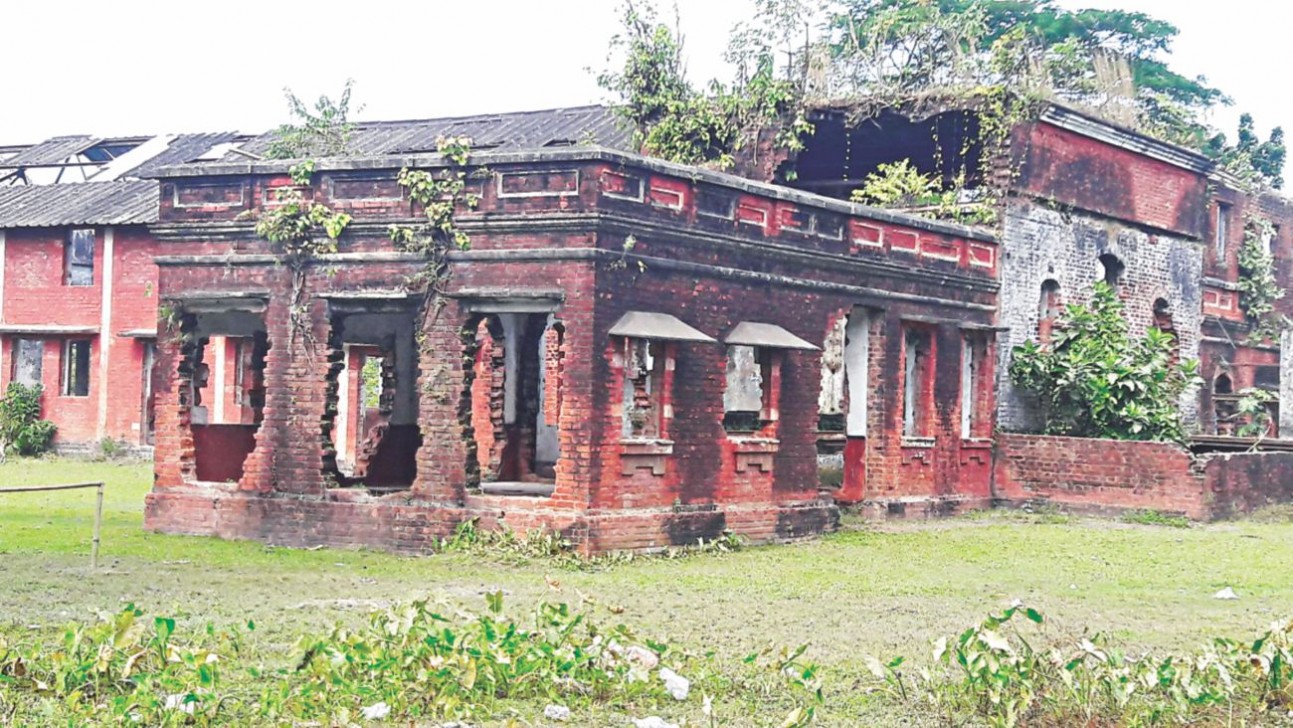Cultural workers and civil society members are up in arms against an attempt by Lalmonirhat business leaders to acquire part of MT Hossen Institute for the construction of a school building.
History of M T Hossen institute
The institute goes back to the British period as part of the railway establishment. It has been an iconic cultural centre, but is now under threat. The Lalmonirhat railway divisional headquarters started its journey during the British rule. After the partition in 1947, it became part of the Pakistan railway and subsequently of the Bangladesh railway after independence.
From 1880 to 1890, the Bengal Duars Railway (BDR) company first laid the tracks of the Lalmonirhat–Burimari rail route, locally known as the BDR line, for easy communication with Dinhata and Jalpaiguri of West Bengal, India.
At that time, the employees of this railway were quite well-off, leading a very sophisticated life. The British government had built eye-catching railway buildings and residential quarters at Lalmonirhat for foreign employees.
Most of the establishments and infrastructure, such as the railway hospital, railway school, parks, training centre, a locomotive shed, and a few thousand buildings in Lalmonirhat division, were built on railway land. For the recreation of elite railway staff officers, the Pears Institute was built in 1905 on 2.73 acres of land in the heart of the city at Babu Para under the patronage of the British railway. The Pears Institute had a movable theatre stage, one among the few in Asia at that time.

After the partition, it was renamed MT Hossen Institute. In those days, it was the only place for recreation in the area, a retired government employee, Abdus Samad, 81, told this correspondent.
Urdu cinema used to be screened in the hall. It was a place of amusement and gathering for people of all ages.
Abdus Samad recalled that a person named Salauddin, a non-Bengali gentleman, used to run the institute. “We often used to go there to watch Urdu films with our friends,” he recalled.
Many noted personalities and artistes performed drama and stage shows at the institute before and after the Liberation. Stalwarts like Birendra Krishna Bhadra, Ahindra Chowdhury, Nirmalendu Lahiri, Robi Roy, Chhobi Biswas, Jashim Uddin, Abbash Uddin and many others visited this institute. Even Jyoti Bosu, longtime chief minister of India’s West Bengal, also visited the place. Famous plays like Sirajuddullah, Sagor Shecha Manik, Ohteb, Taka Ana Pai, Ashami Polatok were staged in the theatre hall. Sojon Badiar Ghat, a famous drama by Jashim Uddin, was performed in his presence in the auditorium.
Jyoti Bosu wrote about the institute in his book ‘Ami Jyoti Bosu Bolchi”.
M T Hossen institute, now
But recently, the Lalmonirhat Chamber of Commerce and Industry has decided to build a school on the institute premises. This has become a matter of concern for people from the cultural field. They have spoken up against the grabbing of the institute, which is part of the country’s heritage and archaeological history.
The government should take steps to protect the historic institute for the future generation, they say.
When asked, Lalmonirhat Chamber of Commerce president Kamrul Hasan Bokul said they have appealed to the railway state department for allocation of the land for the school. He said the school would be built by keeping the main structure of the institute intact. Sufi Mohammad, a cultural activist and president of Lalmonirhat Sangkritik Kendro, said the school could be built on other vacant railway plots.
Shupen Datto, convener of the Lalmonirhat Unnoyon Andolon, said they have demanded that the institute be turned into a town hall, gymnasium and a ‘mukto mancho’ for recreation and cultural activities of the young generation.
When asked, the state officer of the Lalmonirhat divisional railway (BR), Rezwanul Haque, said no land of the MT Hossen Institute had been allocated for the proposed school. Mojibur Rahaman, president of the Sammilito Sangkritik Jote in Lalmonirhat district, said the MT Hossen Institute is part of the country’s cultural heritage and has to be protected. The Jote has been working to save the building from 2013. It has applied to the cultural ministry to renovate the building, but the government has taken no initiative so far, he added.
Bangladesh Shilpakala Academy director general Liakot Ali Luky said he has requested the authorities concerned to protect old monuments and theatre stages across the country. His academy has taken the initiative to protect and repair the institute, he added.
The report was published in The Independent on November 18, 2017
